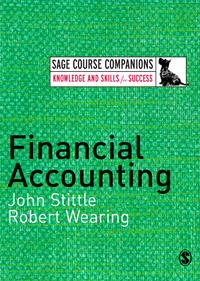Question 1: You are presented with the following trial balance of Karen Trading Investment Holdings, a limited liability company, at 31 October 2019. Dr. Cr. $ 000 S000 145,092 Sales Sales return Inventory at 1 November 2018 Purchases Travelling expenses (Distribution costs) Insurance (Distribution costs) Utility expenses (Distribution costs) Printing expenses (Administrative expenses) Salaries (Administrative expenses) Bank loan interest paid Land at cost Buildings at cost Motor vehicles at cost Equipment at cost Buildings, accumulated depreciation, at 1 November 2018 Motor vehicles, accumulated depreciation, at 1 November 2018 Equipment, accumulated depreciation, at 1 November 2018 Trade receivables Cash Trade payables Bank overdraft Bank loan Share capital Retained earnings at 1 November 2018 1,788 8,040 89,472 7,800 3,936 1,440 4,404 17,040 828 13.980 31,680 5,040 9,600 15,000 840 4,020 33,120 1,008 9,000 3,144 8,988 32,040 11,052 229,176 229,176 Retained earnings at 1 November 2018 11.052 229.176 229,176 Page 2 of 9 Additional information as 31 October 2019: 1. Buildings are depreciated at 10% of cost, allocated to administrative expenses. 2. Motor vehicles are depreciated at 20% of cost, allocated to administrative expenses. 3. Equipment is depreciated at 30% of cost, allocated to distribution costs. 4. There were no additions or disposals of non-current assets during the year. 5. Inventory at 31 October 2019 was valued at $8,148,000. 6. Land was revalued at 31 October 2019 to $18,252,000. 7. Tax of S1,008,000 is to be provided for the year. Required: Prepare a statement of profit or loss and other comprehensive income for the year ended 31 October 2019 of Karen Trading Investment Holdings Limited in accordance with "HKAS 1 Presentation of Financial Statements". Question 2: An investor is considering the purchase of shares in either Cindy Ltd or Jenny Ltd. Both companies are in the same line of business and their accounts are summarized below: Statements of financial position as at 31 October 2019 Cindy Ltd Jenny Ltd S000 5000 S000 $'000 Assets Non-current assets Al cost Accumulated depreciation 39,600 (11,970) 101.700 (14.760) 27,630 86,940 15.120 8.910 11,340 17,730 11,520 3,510 35,370 63.000 32,760 119,700 Current assets Inventory Receivables Cash and cash equivalents Total assets Equity and liabilities Share capital and reserves Share capital Retained earnings Non-current liabilities Bank loan Current liabilities Trade payable Interest payable Income tax Total equity and liabilities 36,000 18,000 54,000 83.700 8,910 92,610 9,900 3.400 10.800 990 5,400 3,600 9,000 63,000 17.190 119,700 Statement of profit or loss and other comprehensive income for the year ended 31 October 2019 Cindy Ltd Jenny Ltd S000 5000 S000 S000 74.340 (38,160) 36,180 81,720 (50.040) 31,680 Sales revenue Cost of sales Gross profit Expenses: Administrative Selling distribution Depreciation Bank loan interest Net profit 5,940 7.470 3.960 6,750 7,740 4.410 3.420 (17,370) 18,810 (22.320) 9,360 Required: a Calculate the following six ratios for both companies, clearly showing the ratio formulae and figures used (please round up your answer to one decimal place). i. Current ratio: ii. Quick ratio (acid test ratio): iii. Receivables collection period; iv. Return on capital employed; V. Gross profit margin (in percentage); vi. Net profit margin (in percentage). (12 Marks) b. Prepare, for the investor, comments on the performance and position of Cindy Ltd and Jenny Lid using the ratio calculated in part (a). (7 Marks) c. State any additional information that would be useful to help interpret both companies financial position (3 Marks) d. Explain three benefits, which would result from the introduction of a budgeting system by a company. Question 3: The following performance report for the year ended 31 March 2020 of Billy Building Company Limited was available. Budget $000 Actual 3'000 Variance $000 52,800 61,600 8.800 Sales Less: Cost of goods sold Direct materials Direct labour Production overheads - Fixed Production overheads - Variable Gross profit Selling overheads - Fixed Selling overheads - Variable Net profit (4.800) (2.400) (8,000) (9.600) 28,000 (6,000) (7.200) 14.800 (5,760) (3.000) (8,800) (12.000) 32,040 (5,600) (8.800) 17,640 (960) (600) (800) (2,400) 4,040 400 (1.600) 2.840 Other information: The above budget figures were based on budgeted output of 60,000 units, but the actual output was 80,000 units. Required: Revise the performance report for Billy Building Company Limited for the year ended 31 March 2020 in a flexible budgeting format showing also whether each of the variances is F (Favourable) or A (Adverse). (15 Marks) b. The financial director has not discussed the proposed budgeting system with junior managers. He is considering imposing production and sales budgets upon them, without their involvement. Explain the following approaches to budget setting and give two advantages of each approach i. A "top-down" approach; ii. A"bottom-up" approach. (5 Marks) Explain the following accounting terms: Current assets and non-current assets: Current liabilities and non-current liabilities. c. i. ii. Question 4: The cash inflow / (outflow) for this project of Kenny Enjoy Investment Limited is given below: Year Project Golden 0 1 2 3 4 $ (22,600) 9,400 7,550 3.820 1,830 4.970 The company is estimated that the scrape value of the Project Golden will be $780, to be received at the end of the eighth year. Required: a. Calculate the payback period for this project. (3 Marks) b. Establish the net present value (NPV) of the above project assuming that the discount rate at 7% (4 Marks) c. Calculate the internal rate of return (IRR) of the above project. (Note: Try to use 7% and 15% discount rate to calculate.) (8 Marks) d. Find the internal rate of return (IRR) of the above project using graphical method. (6 Marks) Audit committees contribute significantly to raising the standards of corporate governance if they operate effectively. Briefly comment on this statement e












